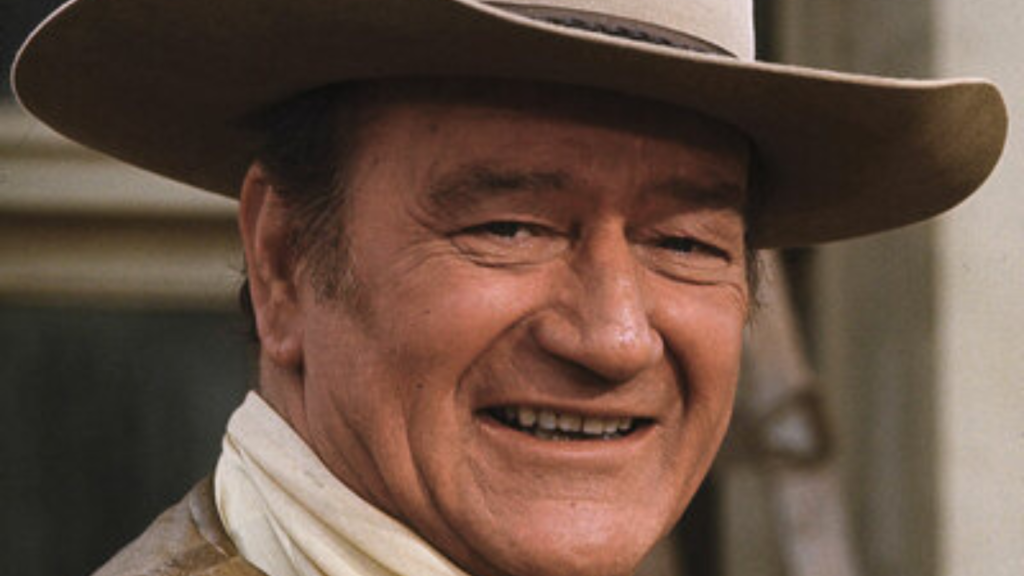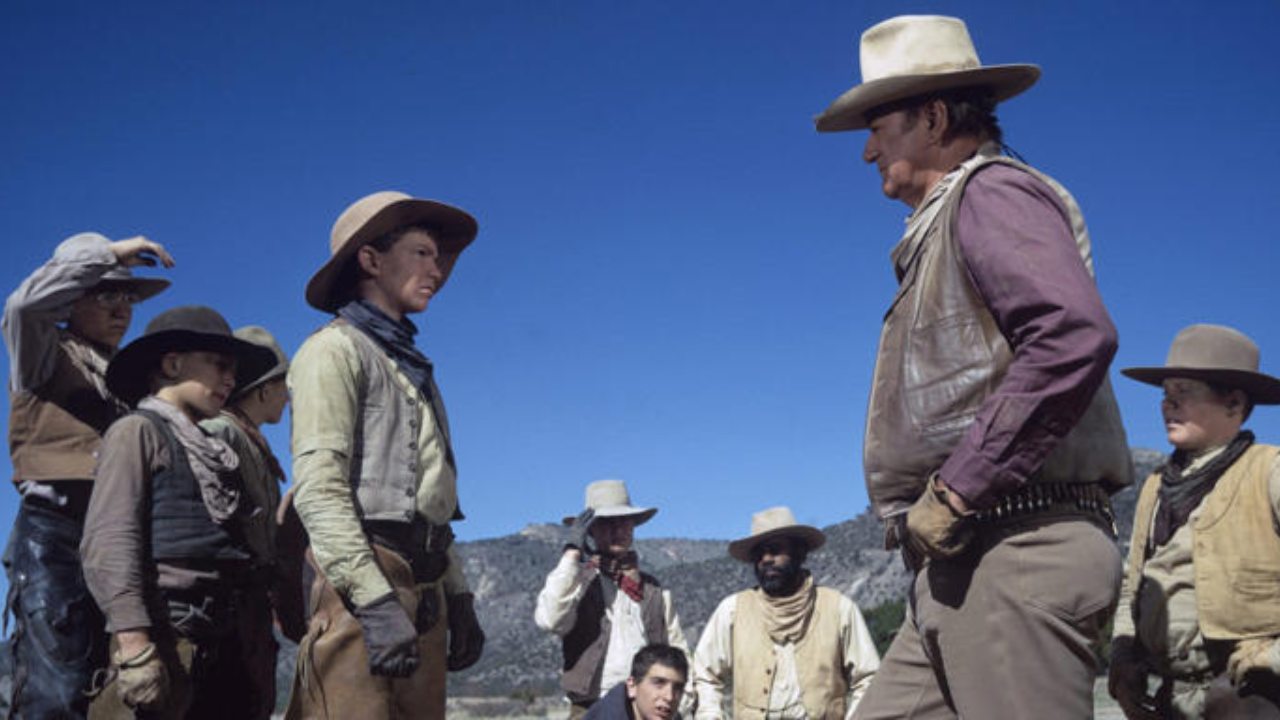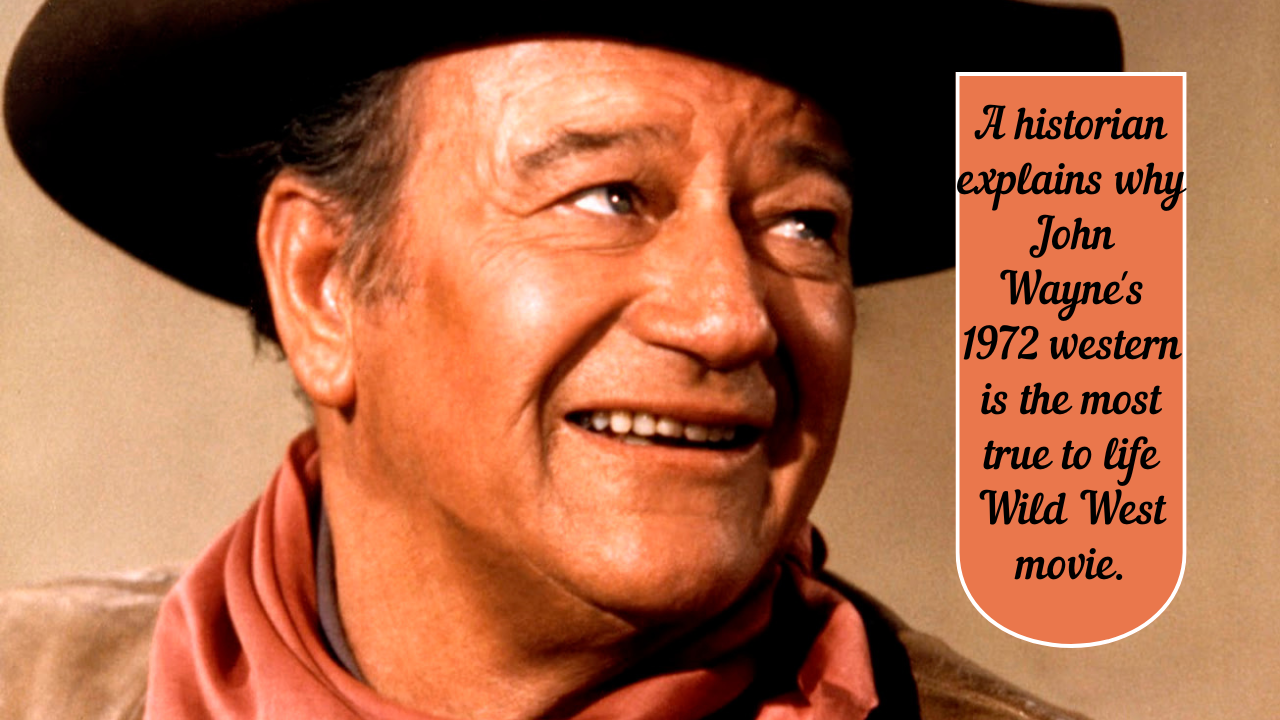Historian Michael Grauer says the Cowboys is the most accurate Wild West movie available.
Along the route, John Wayne’s character in The Cowboys employs young boys as trailhands, confronting serious threats.
- The Cowboys scored a strong 80% on Rotten Tomatoes despite minor mistakes.
- A historian reveals why The Cowboys is the most true Wild West movie. Under the direction of Mark Rydell, the 1972 Western picture follows a grizzled veteran rancher who hires a squad of inexperienced schoolboys cowhands to transport his cattle herd to market on schedule, but the trip is riddled with hazards including a team of rustlers attempting to steal the herd. Starring with Roscoe Lee Browne, Bruce Dern, Colleen Dewhurst, Robert Carradine, and Slim Pickens, John Wayne leads the cast.
- Cowpoke and History Consultant Old West – Michael Grauer talks in this video inside why The Cowboys is a true Wild West film and also his favorite. Watch the video segment below, starting at 24:23:

Grauer said his favorite Wild West movie that’s accurate is The Cowboys because Wayne’s character, Wil Andersen, had to hire young boys to be his trailhands, and most of what they encounter along the way is accurate after rating 13 Wild West moments in movies and television for authenticity. See his whole response below:
The Cowboys is my favorite authentic Wild West film as, practically, the John Wayne character has to employ young men and boys to be his trailhands, and the events they come across along the route are rather true to the real narrative.
How Accurate Are the Cowboys? Really How Accurate Are They?
The Historian Opens a Thoughtful Argument
The premise of The Cowboys is that Wayne’s character must recruit the services of a local schoolboy when his crew quits at the last minute before the big cattle drive. As soon as Andersen gets the children’s tour underway, the resourceful outlaw Asa Watts, sometimes called Long Hair (Bruce Dern), threatens their drive. Andersen directs the children to become cowboys. The historian comments that Anderson’s hiring and training of young boys to be his trailhands precisely describes what risks they face on the road.

Most probably the accuracy of The Cowboys is debatable despite what the historian might have said.
The accuracy of The Cowboys is most probably debatable, notwithstanding what the historian states. Actually, cattle drives were risky, and exhausting, and demanded experienced cowhands adept in roping, herding, and surviving hostile environments. Although the movie shows their training, the idea of young guys undertaking such a massive endeavor appears to distort the historical truth even if it is exciting. The villain Asa Watts also lacks total accuracy. Although banditry and anarchy were undoubtedly real issues in the Wild West, Western movies sometimes exaggerate these aspects for dramatic effect.
Though the movie does have a good 80% score on Rotten Tomatoes based on 15 reviews, The Cowboys got quite mixed evaluations overall from critics. While some critics, like Roger Ebert, attacked its inaccuracy, calling the last 30 minutes “unlikely” and “totally contrived,” others, like Pauline Kael, attacked the film’s proposition that boys embrace masculinity by acts of violence and revenge. Though the historian claims The Cowboys is true, there is undoubtedly a discussion to be had on its real accuracy.
The Searchers’ Accuracy Level
The Historian also scored. The 1956 John Wayne Western

Though it boasts a solid 80% on Rotten Tomatoes based on 15 reviews, The Cowboys had generally mixed reviews from reviewers overall. While some critics, like Roger Ebert, attacked its inaccuracy, calling the last 30 minutes “unlikely” and “totally contrived,” others, like Pauline Kael, attacked the film’s proposition that boys embrace masculinity by acts of violence and revenge. Though the historian claims The Cowboys is true, there is undoubtedly a discussion to be had on its real accuracy.
The Searchers’ Accuracy Level
The Historian also scored. The 1956 Western, John Wayne
The basic idea of cowboys against Indians is a myth since almost every actual cowboy and Native person engaged in combat.
Grauer called a moment in the film from The Searchers where the Comanches try a full-frontal attack across a river at a defended position “ridiculous” and “utter nonsense.” According to the historian, whether in numbers or surprise, Native American conflict always sprang from an advantage. Moreover, Grauer argues that the mere idea of cowboys against Native Americans is a myth since battles between real cowboys and Native people practically never occurred.

Thanks in part to their romanticizing of the Old West, Westerns were once very popular. Remarkably, there are rather a lot that are historically correct.
Grauer then relates the actual narrative that motivated The Searchers—that of a young white girl called Cynthia Ann Parker being kidnapped by Comanches during the 1830s. But when she was finally rescued, she had been so fully incorporated into the Comanche way of life that she would not go back with those rescuers to European-American society key point of the movie narrative that the film doesn’t address. Grauer’s rating for the totality of the authenticity of the situation in The Searchers is 2/10.
In his essay, Grauer confesses that The Searchers is a “great film,” and he points out that the only time he says the movie is wrong is when he states that the one scene he broke down he thought was unrealistic. Not only are there not many Westerns, but critics and audiences alike can agree that The Searchers ranks with the best and most iconic films ever made, a classic. Although they differ in degree of historical accuracy, The Searchers and The Cowboys are two major genre films of the Western genre that defined John Wayne’s career.
Conclusion:
Sometimes, the Western that John Wayne directed in 1972 appears as the most real and authentic film representation of the Wild West since it portrays accurately those facts about the frontier that are difficult to bear: from the rough terrain to the sufferings of pioneers. It is unlike most Hollywood versions of the West because the movie respects the historical background and presents a more factual and less romanticized picture of the age. Thus, the movie can be looked at in a differentiated way of close relation to real events, where it distinguishes itself as a sincere mirror of what life was like in the Wild West.
FAQs:
1. Why is John Wayne’s 1972 western considered the most realistic?
A. Its focus on historical accuracy and realistic portrayal of frontier life sets it apart.
2. How does the 1972 western differ from other Wild West movies?
A. It avoids glamorization, showcasing the harsh and authentic realities of the Wild West.

